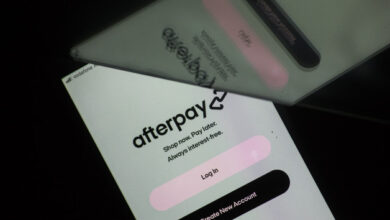Internet service now comes with 'nutrition label'-style information about prices


(NEW YORK) — Starting Wednesday, internet users will now have more transparency about their broadband services.
The Federal Communications Commission now requires broadband providers to display all the information about the price and performance of their services in clear labels.
Alejandro Roark, the chief of the consumer and governmental affairs bureau for the FCC, spoke with ABC News’ “Start Here” about the new rule.
START HERE: What should we know about this announcement today?
ALEJANDRO ROARK: Well, good morning, Brad. Very happy to be here today. And I think what’s important to recognize is that the bipartisan infrastructure law, [and] within that law Congress directed the FCC to require [a] broadband provider to display, in the form of labels, specific and important information about price and performance regarding their internet service plan.
So anywhere that is considered a point of sale, whether you are shopping online, on your mobile phone, [or] whether you’re in-store, these have to be clearly visible to all consumers.
So they shouldn’t be hidden behind some special five clicks that you have to get to or make it harder, confusing to find this information. The rules require these labels to be present at the point of sale, and at the point where we are comparison shopping and are getting ready to make the choice that best meets our household needs and our long-term budgets.
START HERE: What is this label going to do and what will it look like?
ROARK: The FCC, I think, we were smart to borrow the nutrition label model format from food products because we wanted it to make this basic information easily recognizable and easy to understand.
START HERE: And just so we’re clear, it literally looks like the label with the same formatting and shape and all that stuff.
ROARK: Exactly. So as of today, consumers will have simple, easy-to-read facts about price, the speed, the data allowances and other aspects of high-speed internet service upfront.
Plus, by requiring providers to display introductory rates clearly, we seek to end the unexpected one-time or hidden recurring fees or other junk fees that can often get buried in long and confusing statement of terms and conditions that lead to — I know that I’ve definitely felt — that consumer bill shock when I signed up for a service that was supposed to be a really great deal, and then I get my first monthly service [bill] and the prices are completely different.
START HERE: Ah, so, OK. So literally like a food nutrition label, but this will be a broadband nutrition label. When does that go into effect?
ROARK: Well Brad, breaking news happens on this podcast. So I’m happy to say that as of today, April 10, 2024, broadband providers are required to display these new broadband nutrition labels at the point of purchase. And all of us will start seeing those everywhere that internet services are sold.
START HERE: Is it just the design of all this? Is it just kitsch, or do you think it will have a serious effect? I guess I’m wondering how big of an issue this is in, in real life for a lot of people.
ROARK: This, from my perspective, is a kind of market, a transforming ecosystem tool.
I think what we know at this point, after the global health crisis is that, you know, having access to high-quality internet service is essential to sustaining important aspects of our everyday lives. I’m talking about telemedicine. I’m talking about educational opportunities for students, and I’m talking about our ability to engage with the world and to either seek out government services — .
Think about all of the essential services that were completely migrated overnight to online, and none of those processes, systems or support, services are coming back in person. They’re staying online. And it really has forced us all to come face to face with the reality that the internet is an essential tool for 21st-century success.
START HERE: But here’s what I’m wondering, though, because if all of this is about making the internet more accessible, making everything transparent and just easier for consumers across the country to get online, there are programs designed to give low-income Americans access to broadband internet. I think it’s like 30 bucks a month.
The funding for that program is going to run out at the end of this month, and I’m sure the FCC, would be like, “Yeah, we’d love Congress to pass a law about that,” but the FCC can impose fees on broadband companies to pay into a pot. I think it’s the Universal Service Fund for these sorts of lifelines for these communities. So, I mean, will the FCC do that?
ROARK: So I will say that this particular program, the Emergency Broadband Benefit program, which was a COVID emergency response program, really was designed to ensure that every single person, regardless of their ZIP code or economic standing, had the ability to sign up for the internet service that they need.
Again, just for basic participation. The Affordable Connectivity Program since then, over the course of the past two years, has done more to bridge our country’s digital opportunity divide than any other standalone effort in our nation’s history.
Right now, the program counts with over 23 million households enrolled across all 50 states, territories and federally recognized tribal lands and its success, its reach and the impact of the program are absolutely unquestionable.
But we know, like you mentioned, that without congressional action to appropriate new funding for the program, the Affordable Connectivity Program is projected to run out of funding by the end of April, leaving potentially millions of households without the internet connections that we all depend on.
Right now, Congress is thinking about how best to both give the program long-term, sustainable funding. But also, I think in this moment, they’re also considering, what do we do in the meantime? April, the end of April, is right around the corner.
START HERE: Like, why can’t you guys enact some of these fees on broadband providers, I guess?
ROARK: Yep. And so I think all of that is still being negotiated. The Universal Service Program is something that I think has been around for a long time, and there’s a lot of debate and a lot of conversation about: Can we adapt this program to meet the funding needs of the Affordable Connectivity Program.
And that’s something that right now Congress is debating with consumer advocates, and we’re at the table ensuring that whatever comes out of that process meets American consumers where they are. And we know that 23 million households are currently enrolled, and many more continue to be eligible to sign up for this program.
Copyright © 2024, ABC Audio. All rights reserved.





